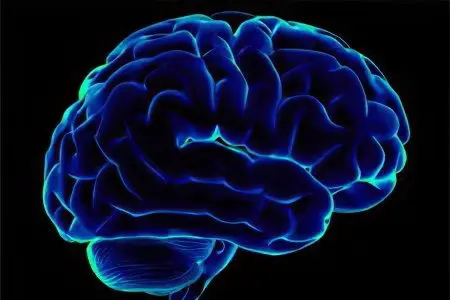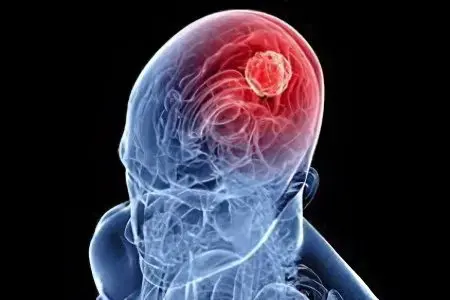Contents
What is cerebral edema?
Cerebral edema – this is the most formidable complication of any intracranial pathology, which consists in diffuse impregnation of the brain tissues with fluid from the vascular space. Regardless of the underlying cause and localization of the disease, brain edema is only spoken about when there are general symptoms that indicate the involvement of the entire brain in the pathological process, and not just its individual parts. It is not in vain that such changes are classified as serious complications, because they represent an immediate threat to life.
Severe decompensated microcirculatory disorders inside the brain tissues become the pathogenetic basis of cerebral edema. They begin to appear in that part of the brain where there is a pathological focus. If the primary disease is too severe or not treatable, the mechanisms of autoregulation of vascular tone fail, which ends with their paralytic expansion. These changes very quickly spread to the surrounding healthy areas of the brain, which leads to a diffuse expansion of the cerebral vessels and an increase in hydrostatic pressure in them. The combination of the inferiority of the vascular wall with increased pressure on it leads to the fact that the liquid components of the blood are not able to stay in the vascular lumen and sweat through the vascular wall, impregnating the brain tissue.

Puffiness of any tissues in the body is a completely natural and frequent phenomenon that does not cause any special problems. But not in the case of cerebral edema, which is located in a limited space. The brain cannot and should not increase its volume, due to the fact that the cranium is very dense, and will not be able to expand under the pressure of enlarged brain tissues. There is a condition in which the brain is squeezed into a narrow space. This carries the greatest danger, as it exacerbates the ischemia of neurons and enhances the progression of edema. This is also facilitated by an increase in the content of carbon dioxide against the background of a decrease in oxygen, a drop in the oncotic and osmotic pressure of the plasma due to a decrease in the protein content and redistribution of blood electrolytes.
Causes of cerebral edema

Since the brain belongs to tissues with increased blood supply, it is quite simple to cause microcirculation disorders that turn into cerebral edema.
The probability of this is the greater, the more extensive the focus of the primary lesion, which may be:
Violations of cerebral circulation in the form of ischemic or hemorrhagic strokes;
Hemorrhages in the ventricles and brain tissue;
Cancer tumors of intracranial localization (glioblastoma, meningioma, astrocytoma);
Metastases in the brain of malignant tumors of any localization;
Fractures of the bones of the cranial vault with brain damage;
Meningitis and meningoencephalitis;
Fracture of the base of the skull;
Intracranial post-traumatic hematomas;
Diffuse axonal injury and brain contusion;
Severe intoxication and poisoning (alcohol, toxic compounds and chemicals, neuroparalytic poisons);
Decompensated hepatic and renal insufficiency;
Any surgical interventions on brain tissues;
Anasarca against the background of heart failure, anaphylactic reactions of an allergic type.
As can be seen from this list of reasons, not only intracranial factors can provoke cerebral edema. Sometimes this formidable complication becomes the result of general changes in the body that occur in the microcirculatory bed of all organs and tissues and are caused by external and internal pathogenic factors. But if the edema of other organs very rarely leads to serious consequences, then cerebral edema almost always ends sadly.
It is very difficult to unambiguously indicate where the line is and why the transition of local swelling in the lesion to general cerebral edema occurs. It all depends on many factors, among which may be age, gender, concomitant diseases, localization and size of the primary pathological process in the brain. In some cases, even small injuries can cause lightning-fast cerebral edema, while even massive destruction of brain areas is sometimes limited to transient or transient edema.
Symptoms of cerebral edema

The clinical picture of cerebral edema consists of cerebral and focal symptoms. Their alternation and sequence of attachment to each other depend on the root cause of cerebral edema. In this respect, fulminant and gradual forms of the disease can be distinguished. In the second case, there is at least some time to prevent further progression of the suspected cerebral edema, and in the first, all that remains is to fight for the life of the patient and, if possible, slow down the progression of the pathological process.
Symptoms of cerebral edema may include:
Clouding of consciousness. This symptom is always present. Its severity can be different: from a stopper to a deep cerebral coma. The progression of cerebral edema is accompanied by an increase in fainting and its depth;
Headache. It can be complained only by those whose cause of cerebral edema is chronic or acute diseases of the brain that are growing in dynamics, provided that consciousness is preserved;
Positive meningeal symptoms. Their appearance should be especially alarming against the background of an aggravation of the general condition of the patient and disorders of consciousness;
Focal symptoms of brain damage. They can be registered only at the stage of edema appearance in the form of limb movement disorders or paralysis of half of the body, speech and visual disorders, hallucinations, and manifestations of movement coordination disorders. But the classic cerebral edema is different in that all these functions are not possible at all. The patient, being in an unconscious state, is incapable of any elements of higher nervous activity;
Convulsive syndrome. Very often, against the background of the progression of cerebral edema, short-term convulsions appear, which are then replaced by complete atony of the muscles;
Drop in blood pressure and pulse instability. Very formidable symptoms of cerebral edema, indicating its spread to the brain stem, in which the most important nerve centers of the life support of the body are located;
Paroxysmal types of breathing. Like cardiac disorders, they reflect damage to important structures of the brain stem, in particular, the respiratory center;
Signs of separation of the cerebral cortex from the subcortical centers (floating eyeballs, divergent strabismus).
Consequences of cerebral edema

As one of the critical conditions, cerebral edema very often ends in the death of the patient. The occurrence of edema marks either decompensated changes in the body of a general nature, or damage to the brain tissue that is practically incompatible with life. All this makes cerebral edema an extremely unpredictable pathology, which may not respond with improvement to ongoing treatment. Among all the possible outcomes of cerebral edema, only three can be distinguished.
Progression of edema with transformation into brain swelling and death
A similar scenario, unfortunately, occurs in half of the cases of cerebral edema of any origin. The danger of the situation is that with the progression of edema, a critical accumulation of fluid occurs in the brain tissues. This causes their pronounced swelling and increase in volume. As long as there is space in the cranial cavity for filling with edematous cells, the condition of patients remains relatively stable. But as soon as the free space is filled, compression of the brain occurs. As the edema progresses, the dense structures of the brain move to softer ones, which is called dislocation. Its typical variant is the wedging of the tonsils of the cerebellum into the brain stem, which ends with a cessation of breathing and heartbeat.
Complete elimination of edema without consequences for the brain
This variant of the development of events is very rare and is possible only if cerebral edema occurs in young somatically healthy people against the background of intoxication with alcohol or other compounds toxic to the brain. If such patients are delivered on time to specialized toxicological or general intensive care units, and the dose of toxins is compatible with life, then cerebral edema will be stopped and will not leave any pathological symptoms.
Elimination of cerebral edema with disability of the patient
The second most common outcome of this disease. It is possible in patients with meningitis, meningoencephalitis of moderate severity, as well as with craniocerebral injuries in the form of small, timely diagnosed and operated intracranial hematomas. Sometimes the neurological deficit is so minimal that it causes no visual manifestations.
Cerebral edema in newborns

The relationship of brain tissue with the cranial cavity in newborns is built quite differently than in adults. This is due to the characteristics of the developing organism and age-related changes in the nervous system. In newborns, cerebral edema is characterized by a fulminant course due to imperfect regulation of vascular tone, liquorodynamics, and maintaining intracranial pressure at a stable level. The only thing that saves a newborn is the features of the joints of the bones of the skull, which are represented either by soft cartilaginous bridges, or are at a distance from each other (large and small fontanelles). If not for this anatomical feature, any cry of a child could result in the development of compression of the brain and its edema.
Causes
In newborns, the causes of cerebral edema can be:
Intrauterine hypoxia of any origin;
Difficult childbirth and birth trauma;
Congenital malformations of the nervous system;
Intrauterine infections;
Meningitis and meningoencephalitis as a result of infection during or after childbirth;
Congenital tumors and abscesses of the brain.
Symptoms of cerebral edema in newborns
It is possible to suspect cerebral edema in a newborn on the basis of such manifestations:
Anxiety and loud crying;
Lethargy and drowsiness;
Rejection of the breast;
Tension or swelling of a large fontanel in a calm state of the child;
Vomiting;
Convulsive seizures.
A very rapid increase in symptoms and a progressive deterioration in the general condition of the child are characteristic. In many cases, cerebral edema in newborns is not subject to reverse development and ends in death.
Treatment of cerebral edema

The diagnosis of cerebral edema, regardless of its origin, implies hospitalization of the patient exclusively in the intensive care unit. This is due to the presence of an immediate threat to life and the need to artificially maintain the basic vital functions in the form of respiration and blood circulation, which is possible only with the appropriate equipment.
The complex of therapeutic and diagnostic measures should include the following areas:
The fight against existing cerebral edema and its progression;
Clarification of the causes of cerebral edema and their elimination;
Treatment of concomitant manifestations that aggravate the condition of patients.
Dehydration therapy
It implies the removal of excess fluid from the tissues. This goal can be achieved through the use of such drugs:
Osmotic diuretics – beckoning is administered in the form of infusions, is prescribed first. After that, the introduction of loop diuretics is recommended. Such a combination of drugs will have the maximum dehydration effect;
L-lysine aescinat. The drug does not have a diuretic effect, but it perfectly removes fluid from the tissues, reducing signs of edema;
Hyperosmolar solutions – magnesium sulfate 25%, glucose 40%. Briefly increase the osmotic pressure of the plasma, enhancing the diuretic effects of diuretics. Additionally supply ischemic brain cells with nutrients.
Adequate oxygenation and improved brain metabolism
Achieved through:
Humidified oxygen instillations or artificial lung ventilation;
Local hypothermia by wrapping containers filled with ice around the head;
The introduction of drugs that improve metabolic processes in the affected brain cells;
Glucocorticoid hormones. Their action consists in membrane stabilization of the affected cells and strengthening of the weakened vascular wall of the microvasculature.
Elimination of the cause and accompanying symptoms
Cerebral edema in most cases is accompanied by various cerebral and extracerebral manifestations that have become its cause or consequence.
Therefore, be sure to monitor and correct:
The state of cardiac activity;
Signs of intoxication and its consequences;
An increase in body temperature, which aggravates cerebral edema.
Solving problems associated with cerebral edema is not an easy task. Only professionals should deal with it.









